How Time Loop Movies Have Avoided Their Own Groundhog Day
People who study the history of storytelling have suggested that there is a finite number of potential plots, and therefore every story has been done before and will be done again. As King Solomon wrote in Ecclesiastes, “There is nothing new under the sun.” This means if you watch enough movies and TV shows, you will eventually see the same scenarios happening over and over, albeit with different actors, settings, and minor details.
One such scenario is the Infinite Time Loop. In this type of story, a certain time period – usually a day, but it could be as short as a few minutes or as long as a schoolyear – repeats over and over, and the main character is the only person who remembers the previous iterations. That character relives the same experiences on repeat, from conversations to random events of chance that happen the same way every time.
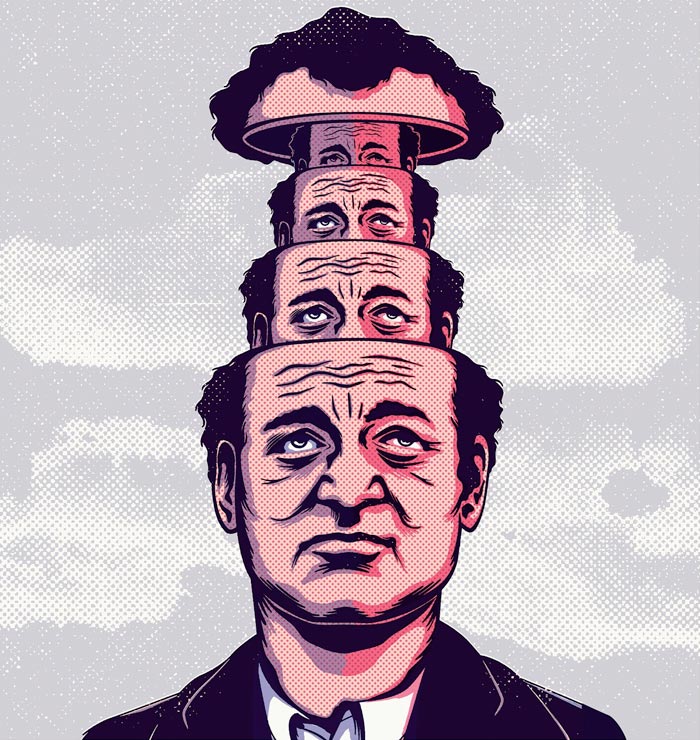
The most popular example of this scenario is Groundhog Day, the 1993 comedy in which Phil Connors finds himself reliving February 2nd in Punxsutawney, Pennsylvania, ad infinitum. Countless works of fiction have reused this premise since Groundhog Day came out. A movie-and-TV marathon of Infinite Time Loops would probably get very, very, very repetitive. But would it be just as torturous for viewers as it is for the characters in these movies? Or are writers creative enough to make each new story sufficiently unique and interesting? An analysis of select examples of this sub-genre reveals many similarities but also some important distinctions.
An Eternity to Improve
The cause of the time loop in Groundhog Day is never explained, but a deleted scene suggests it was a magical curse put on Phil as punishment for his selfish behavior. When he learns his lesson and spends the day being selfless and kind, the curse is broken, and time moves forward normally. This development from selfish to selfless is a pattern in this subgenre, as demonstrated by a long list of examples.
In both Happy Death Day and the sequel, Happy Death Day 2U, Tree Gelbman finds herself in a time loop that always ends and restarts with her death. Both movies include a scene where Tree’s love interest, Carter, dies. The first time, Tree hangs herself in hopes of resetting the loop, so Carter will be alive again. She doesn’t know for certain that the loop will reset, but she risks dying permanently for Carter’s sake.

In the second movie, Tree’s friends find a way to stop the time loop, but when she realizes that Carter is dead, she simultaneously kills herself again and prevents the time loop from ending by crashing a car into a power plant. This is difficult, and again, she does not know for certain if it will work, but she takes the risk to protect even the chance of Carter being alive.
Tree’s character arc is another one of selfishness to selflessness, as evidenced by these scenes of self-sacrifice. She begins the first movie as a superficial, stereotypical sorority girl, but by the end of it she rejects that lifestyle. In the second movie, Tree has an opportunity to live in an alternate reality where her mother is alive, but she ultimately gives it up.
In an episode of Cloak and Dagger called “Lotus Eaters,” Tandy Bowen uses her superpower to enter the dream of a catatonic man named Ivan, where he is repeatedly reliving the same few minutes, Groundhog Day-style. This few minutes includes a phone call from Tandy’s dead father, so Tandy gets to talk to him for the first time in eight years. For some time, she is so distracted by this that she ignores her reason for entering the dream in the first place: getting Ivan to wake up. Tandy would rather leave him in a catatonic state – and stay in one herself – than give up this chance to talk to her dad again.

Eventually, though, with help from her superhero counterpart Tyrone, Tandy accepts that reality is better than this dream, even if it doesn’t include her father. She helps Ivan and Tyrone end the dream – an act of selflessness appropriate for a burgeoning superhero.
In the movie The Map of Tiny Perfect Things, a girl named Margaret is in a similar situation to Tandy and Tree. She accidentally causes a time loop by wishing that time would stop when her mother is dying of cancer. A boy named Mark gets stuck in the time loop with her, and when he realizes that she is using it to get infinite time with her mother, he is willing to let the loop continue as long as she wants. Margaret eventually does decide to end the loop, letting go of her mother so she and Mark can move on with their futures.
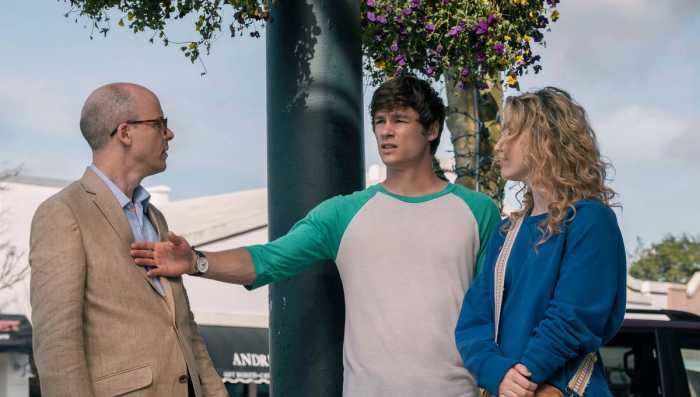
The end of Doctor Strange is another example of an Infinite Time Loop and an act of self-sacrifice. Stephen Strange uses magic to trap both himself and a demon called Dormammu in a time loop. Strange can end it at will, but he refuses to do so until Dormammu promises to leave Earth forever. Even when Dormammu kills Strange in an infinite number of painful ways, Strange persists. Like many other time travelers, Strange begins his movie as a selfish person who probably never would have done this. The major difference is Strange’s time loop experience demonstrates his character development but does not cause it.
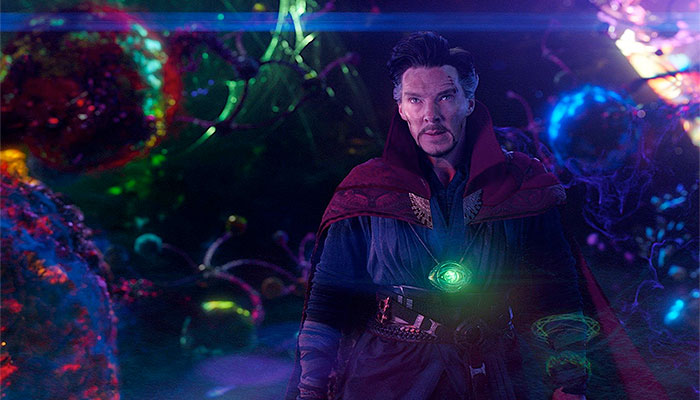
In the movie Edge of Tomorrow, William Cage develops the ability to automatically rewind time whenever he dies, which happens frequently in a warzone filled with alien invaders. Unlike most time travelers in this sub-genre, Cage does not need to become a kinder person to escape his time loop. He only needs to become a better fighter, so he can survive long enough to kill the “brain” that controls the aliens.
However, Cage does achieve victory through self-sacrifice. He cares about the fellow soldiers he’s spent so many days with, even though they have only known him for one day, and he takes steps to protect them and faces the danger mostly alone. In the end, after he’s lost the ability to rewind time, Cage blows up the alien brain, fully expecting to die in the explosion. Once again, it is unlikely that Cage would have made that sacrifice at the beginning of his movie.

At some point during a marathon of Groundhog Day-style movies and TV episodes, one would start to see the trend of selfish main characters becoming selfless. It would get predictable, but that does not necessarily mean it would be boring. Each time traveler finds new and interesting ways to be selfless depending on the plot of the time period they are forced to relive on repeat.
The trope of the time traveler becoming more selfless is referenced but subverted in the movie Palm Springs. Nyles and Sarah – two fairly self-centered people – are both trapped in a time loop, and at one point, Sarah theorizes that they can escape it by performing a significant act of selflessness. When this idea fails, she fully commits to joining Nyles in his selfish lifestyle. While they do ultimately change for the better just enough to fall in love with each other, character development is not what allows them to leave the time loop.

The dystopian future movie ARQ features an infinite time loop, but it makes no mention of the time loop making the time travelers better people. Renton spends his time loop trying to keep mercenaries from stealing his time machine, the ARQ, and giving it to an evil corporation. Hannah, a freedom fighter trapped in the time loop with him, suggests giving it to the resistance, to give them an advantage in the fight against the corporation. Initially, Renton doesn’t think either faction can be trusted with the ARQ; he wants to destroy it. Hannah accuses him of being selfish.
Eventually, Renton agrees to give the ARQ to the resistance, choosing the more hopeful option. This selfless choice does not directly affect Renton and Hannah’s escape from the time loop – in fact, doing the selfish thing by destroying the ARQ would have ended the time loop quickly and efficiently. Arguably, Renton wastes a lot of time making his decision about what to do with the ARQ, and this is what keeps him and Hannah in the time loop for so long.
The breaking of the trend in ARQ and Palm Springs raises the question why so many Groundhog Day-style stories do focus on characters becoming more selfless. Of course, this is a very common character arc across all genres. For example, many superheroes, like Doctor Strange and Tandy Bowen, need to make a conscious and often difficult decision to use their abilities to help others rather than only helping themselves. The significant thing about Infinite Time Loops is it gives characters almost infinite time to try both selfishness and selflessness. They almost always discover that selflessness is more fulfilling.
Nyles points this out in Palm Springs. “It doesn’t matter that everything resets and people don’t remember,” he tells Sarah. “We remember. We have to deal with the things that we do.” Although he stated earlier that “nothing matters” in the time loop, he does still have a conscience, and he prefers not to live with memories of being cruel.
Meanwhile, leaving a time loop is sometimes the most selfless thing a character can do. Of course, this depends on what is happening in the time loop. If it is a loop of disaster and death, like Edge of Tomorrow, ARQ, or Happy Death Day, getting out is definitely in the time traveler’s self-interest. But in many cases, the time loop is an okay place to be, or it includes something the time traveler doesn’t want to give up, like a parent who would be dead outside of the loop.
In Palm Springs, Nyles expresses this perspective as well. When Sarah suggests a way to finally get out of the time loop and return to the “real world,” Nyles responds, “Why would I want to go back there…? It’s a world with death and poverty, debilitating emotional distress.”
Many people would be interested in a way to avoid getting older and facing an uncertain future. An Infinite Time Loop provides constancy and certainty. Some people would find this boring, as many time travelers in the sub-genre do, but it could also be a pleasant escape from the uncomfortable demands of life. Ending the time loop would be the mature choice, and so it is a classic form of character development to see a time traveler gain the maturity to make that choice.
Sometimes, the in-plot purpose of the time loop is to convince the time traveler to let go of something they’re unwilling to give up. In an episode of Arrow called “Reset,” Oliver Queen repeatedly tries and fails to save a friend’s life in an infinite time loop created by a quasi-deity. The Supernatural episode “Mystery Spot” has a similar premise, as does the pilot episode of Star Trek: Deep Space Nine.

In these three examples, the person causing the time loop explains that the hero’s obsession with dwelling on the past or trying to avoid the inevitable is holding them back, even in normal reality. For many viewers, this is a commentary on our own tendency to live in a time loop of regret and stubbornly trying to change the future.
I’ll Love You Forever
Another common thread in Infinite Time Loops is the time travelling character pursuing a romantic arc. Phil Connors uses his ability to remember past iterations of Groundhog Day to try to seduce at least two women; one attempt works, but the other one results in many, many rejections from his colleague, Rita. In that time, he develops actual feelings for Rita; then, after his arc of character development, she sees his selflessness and falls for him.
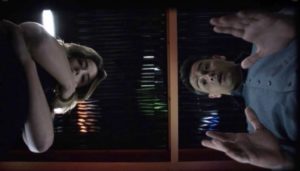
In an episode of Agents of S.H.I.E.L.D. called “As I Have Always Been,” Daisy Johnson is trapped in a time loop trying to save her team of time travelers from falling into a time vortex. She repeatedly needs to convince the team that she’s stuck in a time loop, so they’ll listen to her suggestions of what to do. However, she notices that teammate Daniel Sousa is always ready and willing to believe her and help her. When Daisy spends a loop asking him why, he reveals he has feelings for her. Daisy, in turn, discovers she reciprocates those feelings.
The most apparent reason for this trend, apart from the compulsion for every movie to have a romantic arc, is the isolation mentality created by the Infinite Time Loop. Even if time travelers are surrounded by people every “day,” they feel separated from everyone else. As Margaret puts it in The Map of Tiny Perfect Things, it’s “like everyone else is dreaming, and you’re the only one who’s awake.”
The quick and easy fix for this feeling of isolation seems to be having a one night stand that will be erased when the time loop resets. This is an example of the selfish lifestyle that loses its appeal after a while.
On the other hand, given infinite time, it is apparently easy to get to know a specific person well enough to develop feelings for them. While it may seem unlikely that the other person can develop feelings for the time traveler in just one day or less – assuming the other person doesn’t remember previous time loops – it is often assumed that the other person had unexpressed feelings beforehand, as is the case with Daniel Sousa in Agents of S.H.I.E.L.D.
Many times, when two time travelers are trapped in a time loop together, they end up in a relationship with each other. This happens to Nyles and Sarah in Palm Springs, Mark and Margaret in The Map of Tiny Perfect Things, and Renton and Hannah in the movie ARQ. In an episode of Torchwood, John Hart mentions that he was trapped in a time loop with Jack Harkness for two weeks, repeated for five years, and he implies that their forced co-habitation included romance.
In cases like these, both time travelers remember all the time they’ve spent getting to know each other, so their feelings are more believable than when there is only one time traveler. They are brought together by their shared experience. As Nyles from Palm Springs points out: “I know it’s crazy odds that the person I like most in my entire life would be someone I met while I was stuck in a time loop, but you know what else has crazy odds? Getting stuck in a time loop!”
A Lifetime in a Day
In Groundhog Day, Phil asks a townsperson, “What would you do if you were stuck in one place and every day was exactly the same, and nothing that you did mattered?”
The townsperson thinks a moment and responds, “That about sums it up for me.”
In the movie Before I Fall, time traveler Samantha asks a classmate, “Do you ever feel like you’re living the same day over and over again with only, like, a few things being different?”
Her classmate replies, “You just described my whole life.”
Jokes like these highlight the fact that many Infinite Time Loops are microcosms of regular life for the average person. It is especially poignant in 2021, a year into the COVID-19 pandemic and resulting quarantine orders. Many people spent most of 2020 stuck in their homes with every day looking and feeling the same as the previous day. Infinite Time Loop stories took on a new meaning.
Given enough time trapped in a time loop, most time travelers will develop nihilistic points of view. It becomes very hard to see purpose and meaning in life when everything resets every day (or every few minutes, in some cases). As Mark puts it in The Map of Tiny Perfect Things, “Everything that I do gets undone, everything that I fix gets broken, and everything that I make, it just disappears.”
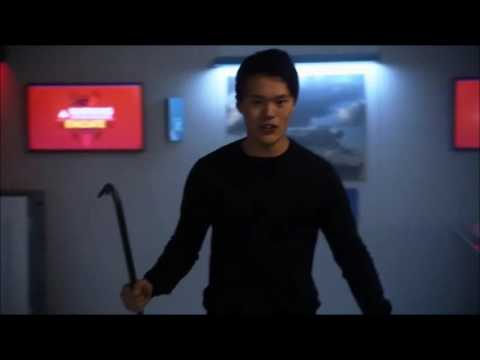
In an episode of The Librarians called “And the Point of Salvation,” Ezekiel Jones is stuck in a time loop where he tries and fails to save his friends from dying. Eventually, he collapses, screams, and starts breaking things. Then he locks his friends in a closet where he knows they’ll be safe, saying, “I can’t watch you die anymore… This way, only I die.” Considering earlier in the episode, Ezekiel had been intentionally letting them die just to reset the loop and try again, this is another example of a time traveler developing selflessness, albeit a tragic one.
Fatigue like this is a common feature of Infinite Time Loop movies and TV episodes. One explanation of this pattern is what psychologists would call the five stages of grief. In a way, these time travelers are grieving the loss of their future. They may initially react with denial, refusing to believe the time loop is permanent, and bargaining, trying various methods of breaking the loop.
After denial and bargaining fail to bring peace or freedom, some time travelers move into the anger stage. Tree Gelbman spends a loop screaming at everyone when she wakes up in another time loop in Happy Death Day 2U. Roy blames Nyles for getting him trapped in the Palm Springs time loop, so he spends several loops torturing Nyles.
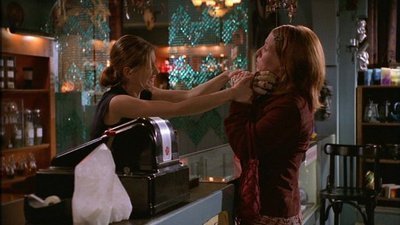
The stage of grief most commonly seen in Infinite Time Loops is depression. Buffy Summers starts sobbing when she’s stuck in a time loop in the Buffy the Vampire Slayer episode, “Life Serial.” Sam Winchester begins to act like an automaton going through the motions of his repeated day in “Mystery Spot.” Phil Connors makes several attempts to kill himself, thinking death is the only escape from his never-ending Groundhog Day.
Hopefully, any grieving person eventually reaches the final stage: acceptance. For Phil Connors, acceptance takes the form of living altruistically, spending Groundhog Day helping people. This altruism allows Phil to escape the loop.
Since Groundhog Day, acceptance has become rare for time travelers in Infinite Time Loops for two reasons. First, many time loops involve the time traveler dying at the end of each loop, so acceptance seems impractical. Second, practically every story in the sub-genre ends with the time traveler escaping the loop, making acceptance unnecessary.
At the beginning of Palm Springs, Nyles has already been living in the time loop for a while. He implies that he previously went through depression, trying “a lot of suicides,” but he has now accepted his eternal circumstance. Mark is in a similar mindset at the beginning of The Map of Tiny Perfect Things.
However, for Mark and Nyles, the introduction of a new time traveler stuck in the loop with them begins to change their mindsets. They both ultimately return to the bargaining stage, trying to break the time loop again, so they can continue into the future with their love interests. This is the conclusion of their romantic arcs, as well as the fulfillment of their becoming more selfless.
And so this analysis of Infinite Time Loops comes, very appropriately, full circle.
What’s the Difference?
The similarities previously mentioned are a natural and most likely intentional result of writers drawing inspiration from or directly paying homage to Groundhog Day and the Infinite Time Loop sub-genre. However, there are some differences between the stories that keep things interesting.
Most notably, there are as many ways to get trapped in an Infinite Time Loop as there are ways to travel back in time. Just from the examples already mentioned, we have quite a list: a curse, a catatonic dream state, a wish, a magic spell using a singularity from the dawn of time, an alien blood transfusion using a grenade, a perpetual motion energy generator, a trickster god’s prank, a powerful alien race saying “Hello,” a malfunctioning time machine, a nuclear meltdown on magical ley lines combined with a video game, and more.
Sometimes, discovering what caused the time loop is the main mystery of the plot and a necessary part of finding a way to stop the loop. When Sam Winchester realizes he’s being pranked by the Trickster in “Mystery Spot,” he knows he needs to find and threaten the Trickster in order to be released from the time loop. When Ezekiel Jones realizes he’s trapped in a video game in The Librarians, he ends the time loop by cheating the game’s physics engine. Mysteries like these can keep the audience engaged each time they watch a time loop story, even if they have seen something like it before.
Even if the time travelers are not trapped in an actual video game, they often need to learn the “rules” in order to get out. Sometimes, such as in “As I Have Always Been,” the loop resets after a certain period of time, so the time travelers have a limited time frame to attempt the solution once they find it. Other times, such as in Edge of Tomorrow, the loop only resets when the time travelers fall asleep or die, so as long as they can avoid that, they have time to attempt the solution. The audience learns the rules along with the time traveler; for science fiction fans especially, this can be a fun way to keep audiences engaged.
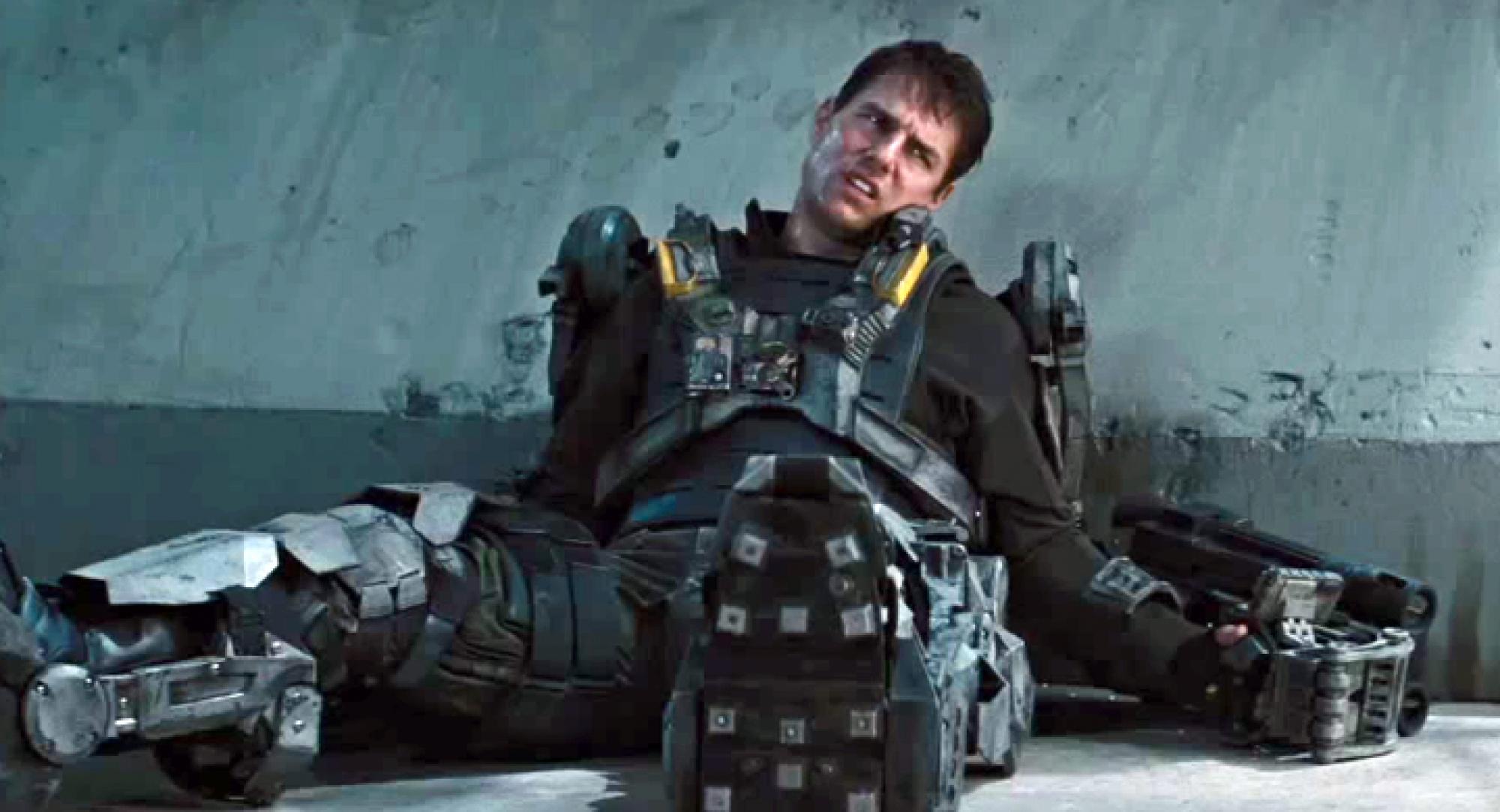
The other major difference among Infinite Time Loop stories is the time traveler’s reaction. Sometimes the time traveler is used to impossible things happening – Agents of S.H.I.E.L.D., The Librarians, and Supernatural are all about characters who encounter and investigate strange phenomena regularly. These characters take a calm, systematic approach to their circumstances, at least at first.
Other characters are much more surprised by the Infinite Time Loop. These characters – Phil in Groundhog Day, Tree Gelbman in Happy Death Day, William Cage in Edge of Tomorrow, and so on – often react wildly and emotionally at first. The other characters, who do not remember previous time loops, find the time travelers’ behavior especially odd, assuming them to be crazy or playing a strange joke.

However, depending on when the movie or TV show was made and how “nerdy” the time travelers are, they may recognize what is going on. In ARQ, Renton is an engineer who built the time machine that is causing his time loop (albeit accidentally), so he is not all that surprised and quickly figures out what is going on. The main characters in The Map of Tiny Perfect Things are young and well-versed in science fiction movies and TV shows, and because their time loop does not involve danger or disaster, they take it in stride, finding various way to enjoy their infinite time.
In stories like this, the time travelers can make references and jokes about their situation that the audience will recognize and appreciate. They can indirectly acknowledge how often Infinite Time Loops seem to happen, and they can try things based on what characters in other movies and TV shows have done.
This brings attention to the core idea behind Infinite Time Loop stories: the “what if?” question. Characters who are familiar with time loops get to explore the hypothetical “what would you do” scenario for themselves. Characters who have never wondered this before get to experience it for the first time, and this reveals things about them they may not have been aware of.
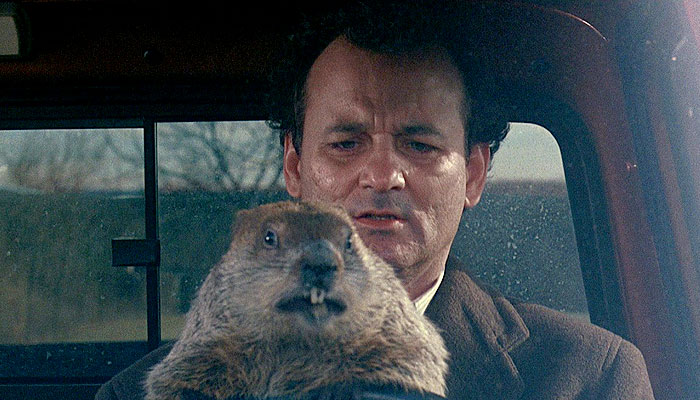
After watching enough Time Loop stories, audiences inevitably ask themselves that question. If you found yourself re-living the same day over and over, what would you do? Would you selflessly help others, like Phil at the end of Groundhog Day? Or would you give into the temptation to use the Time Loop for short-term pleasure, like Nyles and Sarah in Palm Springs? How long do you think you would last before the repetition got boring or depressing and you tried to break the loop? The Groundhog Day sub-genre presents various examples of the effects your choices may have.
Although people will never be trapped in a time loop in real life, there are some real-world implications of a person’s answer to this hypothetical. It is very important that practically every time traveler learns living for others’ benefit is more fulfilling than living selfishly. Also, even characters who previously didn’t want to face the future find themselves wishing they could when they realize they could be trapped in the present forever.
Lastly, as Tim Lake said in the time-travel movie About Time, the greatest thing one can learn or teach from the ability to rewind time is, “Live life as if there were no second chances.”
What do you think? Leave a comment.











I do enjoy these kind of stories, they are interesting and they allow for abroad range of stylistic options. Groundhog day cannot be topped though, it really is a practically perfect movie, clever and heartfelt ideas, strong supporting cast and Bill Murray in his absolute pomp. Just wonderful.
it really is, I cannot think of a single scene that is superfluous or was done poorly.
It may not be the best movie ever but it is almost a perfect film in what it is
At the risk of nitpicking, some of it doesn’t quite make sense. At the end, when Bill Murray is entertaining everybody with his piano-playing, the lady who taught him proudly boasts that he’s her pupil, but the likelihood is that she didn’t see him ‘that’ day, or if she did, she was meeting an accomplished pianist for the first time.
That’s the joke though – she’s boasting, pretending she got him to that level even though he’s only had one lesson with her (whilst at the same time not realising she actually did teach him over hundreds of days).
Or the fact that the muscle memory required to get to that standard would never develop if any slight physical gain was being lost every day.
I think it is the best film ever made. Just perfect.
Phil : [talking to a sleeping Rita] I think you’re the kindest, sweetest, prettiest person I’ve ever met in my life. I’ve never seen anyone that’s nicer to people than you are. The first time I saw you… something happened to me. I never told you but… I knew that I wanted to hold you as hard as I could. I don’t deserve someone like you. But if I ever could, I swear I would love you for the rest of my life.
Rita : Did you say something?
Phil : Good night.
It’s just a story telling device done absolutely brilliantly in Groundhog Day. It’s also great in the much smaller film, Run Lola Run.
‘Groundhog day cannot be topped though’
Take a look at the 2014 Australian sci-fi film, ‘Predestination,’ directed by the Spierig Brothers and starring Ethan Hawke and Sarah Snook. Now there’s a perfect time loop story! A temporal ‘agent’ is predestined to become his own mother and father, hence the title. It’s based on the short story “-All You Zombies-” written by Robert A. Heinlein, but has nothing to do with zombies.
I tried to watch Russian Doll, a GDay copy, but, IMO, it’s crap. The lead is not at all engaging.
I’m inclined to agree. I watched Russian Doll specifically for research for this article, but it doesn’t have anything worth mentioning here. The only thing I found interesting was the fact that one of the characters trapped in the loop has some form of obsessive-compulsive disorder, so he finds peace in doing the same thing over and over. Other than that, the show doesn’t breaky any new ground.
I watched Russian Doll last week and thought it was one of the better tv shows I’ve seen in recent years.
Sitcoms and series have to run for years to get to the same level of character knowledge and expression that Lyonne managed by episode 2.
Different strokes, I suppose.
Nadia’s irritating, selfish and immature and that’s why she’s stuck in a time loop. She needs to grow up and start acting her age.
Do you mean the actress Natasha Lyonne isn’t “engaging” or the character Nadia Vulvokov that she plays isn’t? Or both?
I’m glad it’s not just me. We watched this as far as episode 3, convinced that it must improve, but it never happened. Obnoxious characters. Obtrusive soundtrack. Cringeworthy drug-taking scenes. An un-researched and unbelievable depiction of what a programmer does. And not a laugh in sight. It’s just so utterly charmless.
Thought it was alright.
Felt it dragged a bit (probably bc we’ve seen the concept before), and was hoping for something a bit deeper at the end. The whole diverse, hedonistic lifestyle portrayal seemed quite clunky.
Also never want to see a close up of anyone smoking ever again! Netflix seem to be popularising it in a lot of shows recently, seems a bit odd and irresponsible.
I started it last night. Not immediately hooked, and to be honest I’m not sure if I’ll continue with it. Something just grated me, whether it was the writing, the acting or the directing..
I really liked Russian Doll.
I’ve only seen Groundhog Day once, enjoyed it, and would like to see again. However my wife refuses to watch it again as when she was at boarding school it was one of the only films they were allowed to watch. The head of that school must have had a devilish sense of humour.
The head of the school wanted a ‘family film’ kind of viewing I would guess – and that set in an adult setting is hard to find nowadays. Even great shows like ‘Wolf Hall’ have to have lots of bare breasts and thighs and orgasmic thrusting thrown in for some bizarre reason – it adds nothing but makes for uncomfortable viewing. I always feel weird having legitimate actors having to do nude scenes wither they want to or not, if they want the part.
Triangle, Timecrimes and Primer are good films in this genre – upping the plot complexity by not resetting the loop cleanly.
Primer is great, but the wibbly-wobbly structure still gives my headache a headache.
Triangle and Primer are great, but Timecrimes is fantastically well done. Watching the bits all fall into place without the story creating paradoxes was brilliant.
So glad you mentioned these. Triangle and Primer are absolute favourites of mine, masterpieces of the genre. I haven’t seen Timescrimes, will have to check it out! Thanks!
Kate O’Mara was great in Triangle.
And unlike Groundhog Day etc, they deconstructed the format by not closing the loop. Felixstowe-Gothenburg, Gothenburg-Amsterdam and then they started back in Felixstowe again. Thus predicting Failing Grayling’s imaginary ferries.
If you like those, do check out ‘Coherence’ and ‘Time Lapse’.
Thanks! Coherence is on my watch list – I’ll add Time Lapse. I also need to read Heinlein’s “All You Zombies” which looks to be the extreme of this kind of self-interaction.
Primer is a great, undiscovered, modern sci fi classic…
Source Code is another fairly decent example of the genre
One of the things I absolutely love about Groundhog Day is trying to work out how long Phil was stuck in the repeating time loop.
The current best guess I’m working on is about 40 years.
That’s based on the fact in the last iteration he plays a very accomplished Jazz improvised version of Rachmaninoff’s second Piano Concerto. Working on the basis outlined by Malcolm Gladwell in “Outliers” – that it takes a minimum of 10,000 hours of practice to become an expert in anything (including a musical instrument).
Assuming he had no natural aptitude and practised occasionally (both ideas which are supported in the film) – you could make a reasonable reckoning that it took him 15,000 hours of practice to get to the very accomplished level he gets to in the “last day” of the film.
On the basis of one hour’s practise day – that would mean he was stuck in the time loop for at least 41 years – day after day of the same day.
Kind of explains why he initially goes from joy to suicidal depression before finding redemption in making the world a better place.
Every day most people do the same thing again and again and again and again. Yet, over the passage of time, there’s also incremental growth and subtle changes.
This formula works well because it riffs on that in a dramatic space using an array of appealing cinematic and narrative techniques to dramatise those incremental changes through character arcs and interesting scenarios. Audiences will happily watch this again-and-again action again and again because it’s subtly life-affirming. Time-loop films allow viewers a (replayed) moment to meditate on what life is all about. In conclusion, I’ll happily come back again…
A few years after Groundhog Day had come out I was working in a factory that made cardboard boxes. It’s fairly repetitive work.
Anyway one day just before lunch I walked up to one of my colleagues who was feeding sheets of cardboard into the back of a printer/slotter and asked him if he had ever seen the film Groundhog Day. He laughed.
Next day I walked up to him at the same time and asked him again if he had ever seen the film Groundhog Day. This time he laughed so hard he was on the ground and the machine had to be shut down.
You have to make your fun where you can find it.
A fine use of repetitive cliche in a cycle of verbiage yielding nothing but more cliche in an arc of circumlocution reiterating an overture to a theme going nowhere.
One way of expressing acceptance, if we are using these time loop films, is a letting go of selfishness. This element was well-highlighted. Good job!
I do not like “time loop” movies! I do think they are boring. But I’m not the best movie critic in the world (ie: I love Hallmark movies!!! Haha!). But this is a very interesting and informative article!
My favourite time-loop film is Los Cronocrimenes (Timecrimes), a satisfyingly logical mystery set in idyllic Spanish countryside. It’s the only film I know that manages to capture the uneasy yet soothing effect of certain video games.
You might want to give the Ethan Hawke film Predestination a try if you haven’t seen it. It doesn’t have the brisk pace of the entertaining Time Crimes, but the acting, particularly from Sarah Snook, is better, and is a more thoughtful and moving film. Also, Australian film, Triangle, while not entirely successful, has good things in it. All three owe a debt to Heinlein.
I absolutely love that film – so simple and clever.
I think the best example of this genre, albeit in a different medium, is the novel Replay by Ken Grimwood. Never filmed, although it seems to have come close over the last few years. Perhaps the problem is that it might be too long a story to work as a one-off film, but rather like Stephen King’s 11.22.63, it would work well as a TV series. Anyway, I’d urge anyone with an interest in this concept to seek it out.
11.22.63 was excellent viewing, but then it did have a superb cast doing a great job.
I am glad you liked it. Having read the book I was very keen to see the series and was gravely disappointed. I thought James Franco, while an excellent actor, was a poor choice for Jake Epping, and although the plot alterations were understandable choices for TV, they were lazily executed and cut a lot heart out of the story.
I’m in a minority (most people and the critics seemed to like it much more than I did) but I do believe the magic of the original story would have been much better captured in a longer run: eight episodes simply wasn’t enough; too much of the atmosphere was left out and it felt hurried. Sticking my neck out—it should have been given 13 hour-long episodes, and allowed to breathe.
The longer, slower format can work. Outlander is a current excellent example of telling a story at its own natural pace, in this case over several seasons, and proves the point that you can make superb TV without having to rush. Sometimes you just need to slow down for atmoshpere, ambience, charcater and time to appreciate and catch up.
I’ll probably never know, but I’d be interested to know if it was as well received by those who’d read the book first, as by those who had not.
Great article. Can you please publish this again every day until further notice.
I think Hollywood folk especially love Groundhog Day because it’s kinda about film-making itself: doing a take over and over until you get it right.
No, Hollywood never gets it right by doing it again, it is not better when re-made. Which seems weird. You have the first one to see all the flaws, to think of how to fix it so the new is great.
If you built a shed and it had lots of flaws you would say, OK, I see where I went wrong, the ceiling is to low, the door is in the wrong place, I put the window in backwards….and do it right the second shed.
Or not 🙂
Phil? Phil Connors?
BING!
Ed! Ryerson! Needlenose Edd. Edd the Head. Come on, buddy. Case Western High 1971! Eddie B Ryerson. You did the whistling belly button trick at the high school talent show. Bing! Edd Ryerson, got the shingles real bad senior year, almost didn’t graduate. Bing again! Edd Ryerson, I dated your sister Mary Pat a couple times till you told me not to anymore.
Great post. Have you heard about Bunuel’s ‘The Exterminating Angel’ from 1962. It features people trapped in place until they are able to repeat their initial actions and I have often wondered if this had influenced Groundhog Day.
The Exterminating Angel isn’t really a repeating time-loop film in the manner of Groundhog Day. The characters are instead trapped in an other-worldly ‘outside time’ prison until they work out the means to escape.
Is there a difference between a ‘time-loop’ and being ‘outside time’? It’s only Phil in Groundhog Day that seems to experience the time-loop – everybody else is oblivious of the repetition. It seems to me that Phil is as much outside time as the guests in the Exterminating Angel and in both cases it is the carrying out of an action unknown to them that releases them.
Good work, amazing work !
“Travelers” (on Netflix) Season 2 episode “17 Minutes” does the loop, and does it well. I like the fact there’s a moment in it which the viewer knows is the moment that will change everything though not how.
I have seen Travelers, and “17 Minutes” is very good. I didn’t include it because it doesn’t quite fit the Infinite Time Loop sub-genre. Rather, it’s a Time Travel Do-over: the time traveler(s) know what’s really happening going into it, and they can stop the loop any time they want. It’s not about escaping the loop, acceptance, or character development. It’s just about making multiple attempts to solve a problem.
I’m surprised the writer didn’t have much to say about Russian Doll. It’s one of the best things to come out of a steadily improving Netflix stable. Really worth a watch.
I watched Russian Doll specifically because of this article, as research. It doesn’t add anything to the discussion. The time loop never gets a proper explanation, so there are no “rules” to learn; we’re just told that the time traveler is smart enough to understand what’s happening, so she somehow figures it out by trial and error. I found it rather dull towards the end. Not worth mentioning. Would not recommend, but that’s just my opinion.
I completely agree- I found Russian doll to an amazing contribution to the time-loop genre, especially the way it deals with ideas of trauma, loss, and isolation.
The Farscape episode Back and Back and Back to the Future is a fun time loop story.
Groundhog Day perfected the romcom with a truly ingenious plot mechanism delivering a truly moving but very funny character development of the hero. Romcom perfection.
Edge of Tomorrow is brilliant.
It’s like a video game – the character goes a certain distance into the game, dies, and then has to start over again from the checkpoint. Every time he plays he gets a little further (or not, sometimes he makes the wrong move and dies quickly) until eventually he completes it.
Yes – it’s a great film that seems to be becoming synonymous with the words ‘underrated gem’. It has something for everyone – if you’re not a Tom Cruise fan you even get a five minute montage of Tom Cruise being executed by Emily Blunt.
These movies are easy to write, easy to pitch.
Star Trek did the time loop – very well – first. 1992’s TNG episode Cause and Effect.
With Kelsey Grammer as Captain Bateson. It was directed by Commander Riker.
Awesome.
‘Star Trek: Discovery’ (Netflix) has a similar episode to ‘TNG: Cause and Effect’, with the ship blowing up each time. The episode is in Season 1: “Magic to Make the Sanest Man Go Mad”.
Love that episode!
This really is a brilliant article.
The first time I saw Ground Hog day was at a cinema in Warrington and I’d just taken a healthy amount of LSD.
It’s one of the best films I’ve ever seen.
My usual complaint with time loop movies is that they often fail to fully explain why the protagonist is stuck. Why should the entire world revolve around Phill Connors? Why should teaching him a lesson be the universe’s purpose? After reading this article I realized that time loop movies re-sensitize us to the reality that our lives are essentially spent living the same day over again, but if we choose to behave differently and disrupt the status quo, our actions may have world-changing consequences. We are all Phil Connors, forced to make meaning in a reality that may feel meaningless. When we realize that we are not stuck, but instead just insulated by the stable lives we cocoon ourselves in, we may start to make radical changes that effect not only ourselves but everyone else we cross paths with.
Indeed. One of the reasons a transition from selfish to selfless is so common in these movies is the time traveler comes to realize just how impactful their decisions are on the lives of those around them.
Like, there’s an episode of The Flash where a time traveler from the future comes to the present for almost entirely selfish reasons: she just wants to hang out with her dad before he died. Then she gets stuck reliving the same hour or so, and every decision she tries to make gets another one of her friends killed. She learns the importance of sacrifice real quick.
Stargate SG-1: Window of Opportunity, anyone?
Thanks for this. I love Groundhog Day; my dad and I bonded over it when I was a kid, and now I like time travel, period, although some examples are much better than others. For instance, I usually enjoy it when a sitcom plays with the time loop plot. And I enjoyed when Once Upon a Time did it, even if it did wear me out about the third or fourth time. Christmas time loops are also some of my favorites. If you ever have the chance to see the (really) old ABC Family movie Christmas Every Day, you should. It’s like Groundhog Day for kids.
Loved this exploration of time loop movies like Groundhog Day and agree part of its appeal has to do with the sense of perspective offered by a character facing the same set of challenges over and over again, especially when the character (like Phil in Groundhog Day) starts to figure some stuff out and begins to grow. There was a film about a boy whose brother was shot by a police officer that involves time travel and a loop. See you yesterday: https://www.newyorker.com/culture/culture-desk/see-you-yesterday-and-the-perilsand-promiseof-time-travelling-while-black
Palm Springs is one of my favorite movie mostly because of the way that Niles and Sarah develop a relationship through Hedonism
Gotta love time loop films.